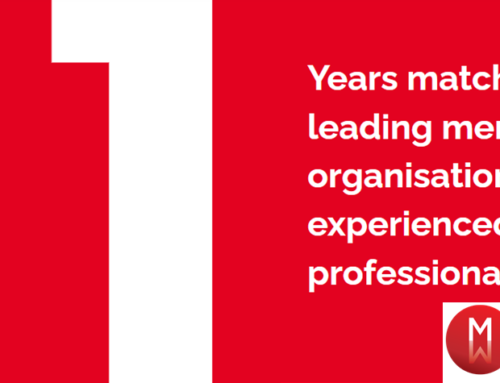Daniel Bailey is the Head of Marketing, Communications and Digital Transformation at the Electrical Contractors Association (ECA). His organisation represents Electrical Contractors in the UK, employs 100 staff and his team includes 6 digital and marketing professionals.
They currently have 3,000 company members. He has worked within the Membership and Association Sector for over 15 years in organisations including the London Chamber of Commerce and Industry (LCCI), British Veterinary Association (BVA), Construction Industry Research and Information Association (CIRIA), RIBA Enterprises and the Institution of Civil Engineers (ICE). He has also provided consultancy services to membership associations.
We caught up with Daniel (ahead of the network’s national digital focused conference and exhibition, Digital Excellence 2022, and shortly after a dedicated Cyber Security Webcast with Cantarus) to explore some of the current digital focused challenges and approaches he is taking to ensure long term success.
Daniel, we understand that cyber security has risen up the ranks recently due to the escalation of war in the Ukraine with Russia. The Cyber Security Council provided membership organisations with practical actions to take (view here). Has the ECA experienced anything like this and what was your approach?
“Yes, there is no doubt that cyber security is firmly rising towards the top of the agenda. In my view, the recent increasing of awareness of the potential threats posed to organisations is a good thing, as all staff need to take responsibility for an organisation’s defences – it’s not just a problem for the IT or Digital department! At ECA, we recently launched a dedicated cyber security webpage for our Members, to support them with NCSC guidance and help raise awareness of the potential threats to their businesses, many of which are small companies without access to dedicated cyber security personnel. Internally, our IT team are constantly updating the latest security patches, reviewing firewalls, access controls etc and making sure that our defences are as watertight as possible. Beyond this, considering the current heightened risk, we’ve asked our staff to retake a series of online cyber security training modules. We are also reviewing our 3rd party software login processes, making sure we’re using the most secure account methods such as authenticator apps. Whilst this is sometimes less convenient for users, it’s a necessary step to take.
Despite all this, we recently had our Facebook advertising account hacked. Whilst we were able to resolve this and no damage was done, this highlighted a few challenges. Firstly, how fallible things can be even if you have the correct security measures in place. Secondly, data leaks from big tech and other sites do occur – so monitoring login activity / checking any security alerts is crucial to ensuring that any issues are countered as quickly as possible. Lastly, how difficult ‘Big Tech’ firms are to deal with in the event of a security breach that doesn’t follow their standard scenarios. It took many stressful hours to get Facebook to resolve our situation, with no explanation forthcoming as to how the hack occurred or suggestions on how to prevent it in future!”
As senior membership professional conducting an omni-channel role, how do you balance the use of different platforms and keep activity on message and structured?
“ECA currently operates about 15 different channels for a variety of audiences. We need to hold the brand carefully, professionally and in a controlled manner to ensure that it flourishes and reflects the views of our Members. Anyone working in a similar role will recognise this challenge and will know how hard it is to achieve!
For us it starts with strategy and planning. At ECA we create an annual communications strategy, with supporting content plans and schedules, to help deliver the aims detailed in ECA’s strategic plan. This gives a vital context to help embed and reinforce key messages throughout the year. That said, things can and do change rapidly, so we must remain flexible and willing to deviate from the plan when necessary.
Under the strategy and plans, each channel is defined in terms of the target audience(s) along with its purpose, a set of guidelines and channel specific targets. Each channel takes significant time, coordination and therefore money to operate, so we’re pretty data driven, monitoring time vs. return and making incremental improvements to channel tactics where performance needs boosting. Recent examples of this include redesigned email marketing templates to help readers scan for content more quickly, and posting more bite sized videos on social – so far these have proved really successful and are quicker to produce than longer form content.
All channel outputs must either be signed off by the marketing team, or alternatively must adhere to a set of guidelines that we train channel users in, to help ensure that things stay on message. This is supported by style and tone of voice guides, as well as practical training on channel tips and tricks.
In the mid-term we are mindful of the need to evolve our comms across a range of platforms to suit the varying and changing needs of our audiences, however we resist calls to add new channels on a whim, until there is a clear objective and plan for doing so. Not to do this would rapidly lead to channel creep and message fragmentation, with all the inherent practical and reputational risks.
Ultimately, we need to offer the right mix of comms, channels and language that resonates best with our different audiences, especially our Members. Their input is vital to shaping this, so we utilise market research and communications audits to help us understand if we’re striking the right balance.”
What are your key priorities in 2022? What will this mean from a member experience perspective?
“It’s probably not surprising to hear that our key priorities this year are membership recruitment and retention. In practice this means trying out new prospecting tactics, improving our ‘touchpoints’ and boosting the digital experience. On the latter, we’ve launched a Member only app, we’re upgrading a key software tool that our Members use, and we’re introducing more marketing automation, with useful triggers at key points in the annual Member cycle.
Behind the scenes we’re continuing our move to a new CRM system that will ultimately provide a better member experience once fully implemented. This is a progressive project rather than a ‘big bang’ CRM change and we’re just about to implement another module which will help to rationalise and future proof things behind the scenes. The short, mid and long-term aims are that our Members find us easier and quicker to deal with and that they become better informed through more tailored contact, helping them to secure even more value from their membership. Additionally, we’re exploring new ways to communicate our key ‘campaign’ areas (the key issues affecting our Members), to better tell the story of how we are helping to shape government policy and supply-chain practice.”
This year at Digital Excellence (2022) you will be chairing the Tech, Data and Behind the Scenes seminar track. What particularly attracted you to chairing this particular track?
“It has long been said that data is the new oil, so I think that makes tech the means to extract and use that oil effectively! Tech and data are fundamental key enablers in helping associations to deliver great member experience and, if done right, are a source of huge competitive advantage. Yet all too often the people involved tech and data are not given much profile, and sometimes association Boards have little understanding of the area, resentfully viewing tech and data spend as a necessary evil, rather than a wise investment that can pay dividends.
The behind-the-scenes stuff in membership associations is so crucial, yet in my view it doesn’t get the airtime it deserves. So that’s why I’m really excited to be chairing this seminar track at DigX. We’ve got a great speaker line up from a diverse array of interesting organisations, covering a range of fascinating topics. Its helping to surface this critical area and it’ll be a great opportunity to share knowledge within the membership community.”
Do you think membership organisations are working better with their chosen solution providers?
“This is a hard one to answer, but broadly speaking I would say yes. If I look back over the last 15-20 years, I believe that membership organisations are generally becoming better informed buyers. There seems to be more internal expertise than ever before (bolstered by knowledge sharing through Memberwise), which helps membership bodies not just to procure more professionally, but to build better working relationship with chosen solution providers.
That said, there are still many challenges. For smaller membership organisations, platform costs are very significant and at times unaffordable, which can hold them back. For larger ones, more complexity is usually involved – and hiring the right skills to manage that complexity is a challenge. The other key challenge is what I term the ‘scale and sale’ paradox. I’ve long advocated that in additional to cultural alignment with a provider, size ‘fit’ is really important, so that the volume of your business carries weight, and you get the attention your membership organisation deserves.
However, when solution providers deliver great service, they often grow quickly and / or win very large new clients. Sometimes this growth results in the sale of the business to a larger entity, which can erode the cultural fit. But more often, when a provider grows, your membership body can get ‘left behind’, or worse still ignored to the point at which it holds back your own organisation’s development. This is a real problem as changing solutions provider is not quick, cheap or easy!”
Back in 2018 the Sector agreed that a digital evolution was required. Then COVID-19 hit. Our core topic at Digital Excellence is Digital. Fast Forward. as we believe a Digital Transformation Revolution has taken place. What are your thoughts?
“There is no doubt that many aspects of digital transformation were turbo charged because of the pandemic, the most obvious one being the rapid adoption of online meetings. To me it feels like the balance has firmly and finally tipped into Digital. However, the pandemic was a change or die situation, rather than being planned, but now that transformation ‘adrenaline’ has worn off where does it leave things?
I feel that digital expectations have been raised both internally and externally. Given that many membership organisations had a lot of ‘digital catching up’ to do pre-pandemic, they are now faced with even more to do – chasing the ‘revolution’ as the goalposts have moved so quickly. So, whilst some sort of digital revolution has taken place, I believe that was just the end of an exciting new beginning.
For me digital transformation has always been about asking what business outcomes you want to achieve for your members – and then working back from there and looking at how these outcomes can be facilitated digitally. I don’t think this has changed, and, if anything, people are more receptive to that now. But landscapes are ever changing, and right now membership organisations should be looking at how their member base has been impacted, not just by Covid but also by other obvious unfolding macro events – and asking what has and will continue to change for members – then adjusting the Membership Proposition accordingly – and working out how to deliver that digitally.”
Visit the Digital Excellence (2022) Conference & Exhibition website to explore the full programme, meet our digital expert speakers and book your place(s) online today.
Booking Offers:
– Early Bird Tickets (available until 25th March) – Save £55
– Group/Delegation Tickets (available on a first-come first-served basis) – Save up to 40%








Leave A Comment